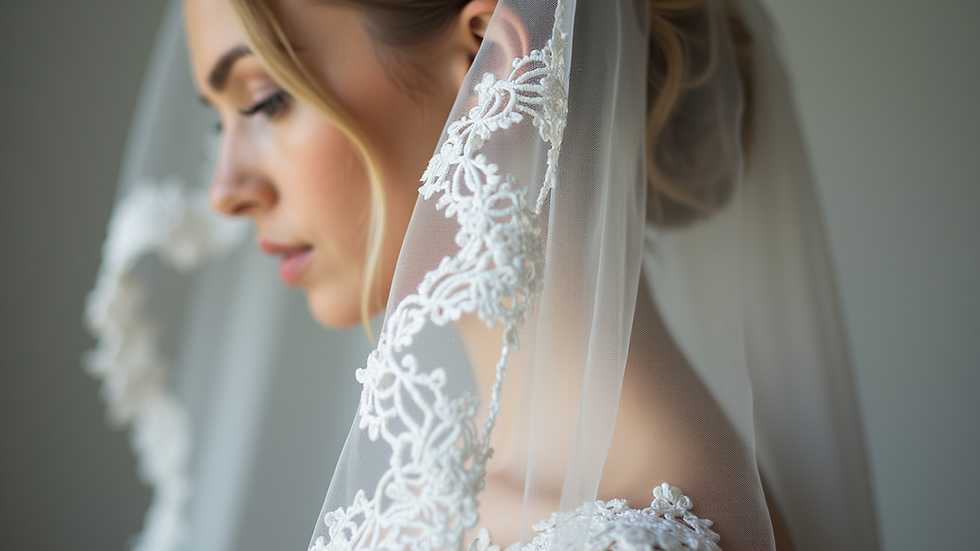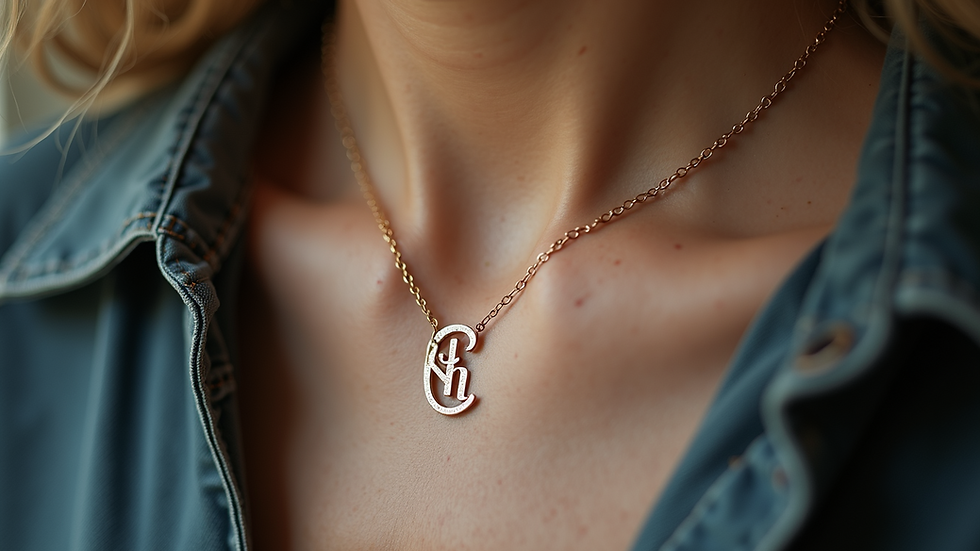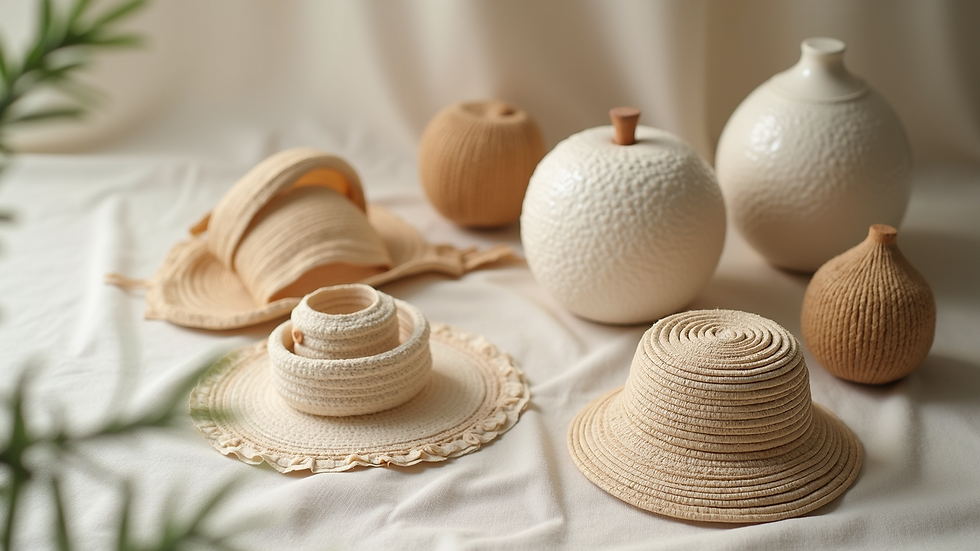Updated: Aug 3
Bridal headdresses are not merely beautiful accessories; they embody the cultural narratives and traditions of wedding customs around the world. Each piece reflects the bride's identity, family heritage, and cultural significance. For instance, the intricate designs of the Indian tikka, the vibrant Nigerian gele, and the regal kokoshnik from Slavic cultures tell unique stories and showcase the rich diversity of bridal customs. This blog post explores these magnificent bridal headdresses, unveiling their beauty and deeper meanings.
The Significance of Bridal Headdresses
Bridal headdresses symbolize femininity, beauty, and social status. They often mark the transition from maidenhood to married life. For many cultures, these items are imbued with symbolism, representing personal identity and familial bonds.
Headdresses can signify purity, wealth, and protection, acting as blessings from the bride's family and community. By exploring their diversity, we gain a greater appreciation for the artistry and cultural significance embedded in each design.
Indian Tikka: A Symbol of Divine Blessing
The Indian tikka is a stunning forehead ornament worn by brides across various regions of India. This decorative piece often features intricate designs composed of gemstones, pearls, and gold.
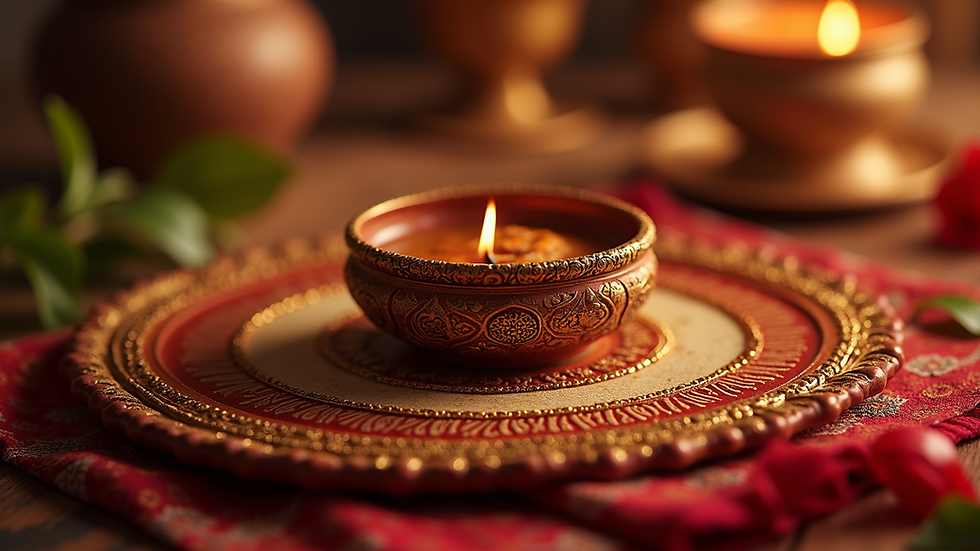
In Indian weddings, the tikka symbolizes the third eye, embodying wisdom and spiritual awakening. Positioned at the hairline, it serves dual purposes: enhancing aesthetics and providing spiritual protection against negativity.
Styles of tikka vary significantly. For example, the simple maang tikka sits elegantly in the center, while more intricate styles cascade down the bride's hair. Choices depend on regional traditions and personal preferences.
Importance of Color and Gemstones
Colors and gemstones in the tikka have profound meanings. Red symbolizes marriage and fertility, while green represents prosperity. Popular choices like diamonds and pearls signify purity and elegance. Brides usually coordinate their tikka with their wedding attire, creating a harmonious look.
Nigerian Gele: The Art of Elegance
The Nigerian gele is a striking headwrap that enhances the bride's attire. Crafted from vibrant fabrics, it is intricately styled to create beautiful shapes.
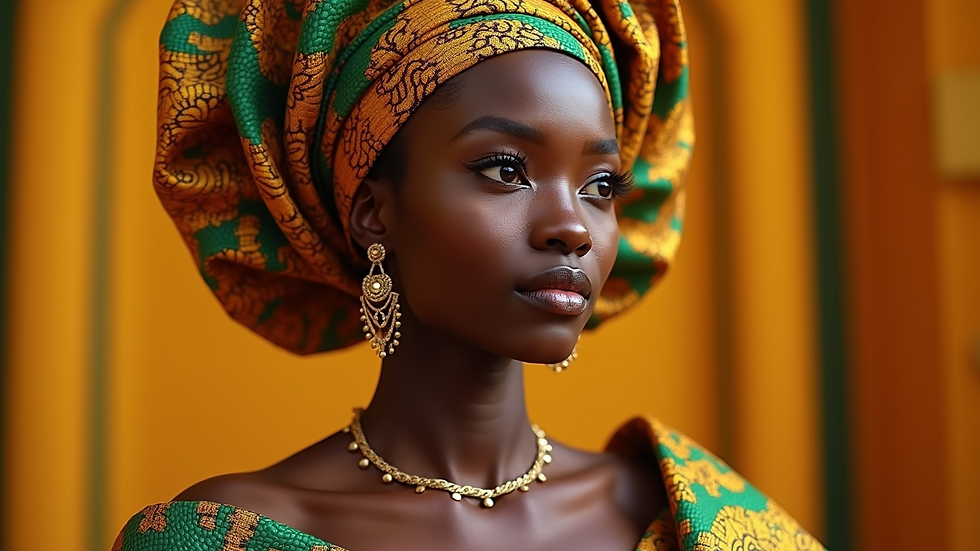
The gele conveys respect and social status, making it crucial in Nigerian weddings. Its elaborate patterns and bright colors mirror the bride's personality and heritage.
Cultural Importance and Expression
More than a decorative item, the gele tells a story of cultural pride and familial love. It serves as a homage to ancestors and symbolizes unity.
Brides create varying styles of tying the gele, from the popular "butterfly" shape to more complex forms. This choice showcases their individuality and creativity. Many couples include the gele prominently in wedding photos, reinforcing its cultural significance.
Slavic Kokoshnik: A Regal Adornment
The kokoshnik is a traditional Eastern European headdress, especially tied to Russian and Slavic cultures. Typically made of richly embroidered fabric or adorned with jewels, its history stretches back to the 16th century.

The kokoshnik bears cultural significance, indicating a bride's marital status and societal role. Traditionally worn by married women, it symbolizes honor and loyalty.
Historical Context and Modern Interpretations
Historically, kokoshniks featured intricate designs representing nature, mythology, and local history. In contemporary use, many brides blend traditional elements with modern styles, ensuring that the kokoshnik remains a cherished part of their wedding experience.
Other Notable Bridal Headdresses
Numerous cultures have unique and beautiful bridal headdresses, including:
African Sash
In many African traditions, brides adorn themselves with elaborate sashes made from colorful fabrics. These sashes symbolize femininity, strength, and cultural pride.
Chinese Hairpins
Brides in Chinese culture often wear ornate hairpins featuring symbols like dragons and phoenixes. These adornments signify good fortune and strong family bonds.
Middle Eastern Tiaras
Middle Eastern brides frequently choose intricate tiaras made of gold and silver, often embellished with gemstones. These designs are emblematic of wealth and the bride's status in her family.
The Role of Bridal Headdresses in Modern Weddings
As cultures blend and evolve, the influence of diverse bridal headdresses is increasingly visible in contemporary weddings. Many brides today mix and match styles to reflect their identities and heritage.
Some opt for a combination of traditional and modern elements, creating a look that celebrates their roots while highlighting their unique style. This fusion of designs promotes cultural diversity and inclusivity.
Choosing the Right Headdress
When selecting a bridal headdress, brides should consider a few important factors:
Cultural Significance: Knowing the meanings behind different headdresses enhances personal connection to the choice.
Personal Style: It's vital that the headdress complements the overall wedding look, including the dress and accessories.
Comfort: Headdresses can vary in weight and fit, so practicing wearing it prior to the wedding day is crucial for comfort during the ceremony.
Consultation: Seeking advice from family, especially elders, can provide invaluable perspectives on traditional selections.
Celebrating the Journey of Bridal Headdresses
Bridal headdresses offer a captivating view into the rich cultural traditions surrounding weddings globally. From the spiritual depth of the Indian tikka to the vibrant flair of the Nigerian gele and the elegance of the Slavic kokoshnik, these adornments encapsulate history, meaning, and craftsmanship.
As cultures continue to interweave, brides are seizing the opportunity to express their heritage through these stunning headpieces. By wearing these beautiful bridal headdresses, brides not only enhance their beauty but also celebrate their unique narratives and the diversity of wedding traditions around the world.



